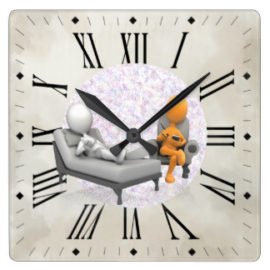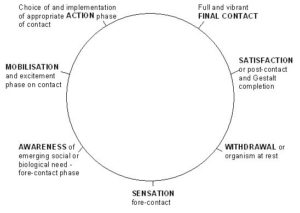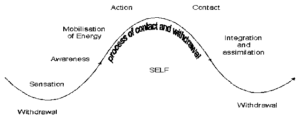
by Dr.Moira Borg MD Gestalt Psychotherapist
Many clients who come to therapy struggle to understand why the therapist makes it a point to stop the session after an hour even if they would be in the midst of an existential crises. Some believe it centres around financial gain while others claim it is related to the pressure of work the therapist has to contend with. Actually the real reason lies in giving the client an experience in healthy contact which in turn supports him/her to re-create their own experience in his/her own way.
The basis of good therapy lies primarily in the setting up of a genuine therapeutic relationship between the therapist and the client. Likewise the client can get an experience in healthy relating, which at times can be the first such event in his/her life, especially if he/she is coming from an abusive field. In turn, the basis of any form of relationship is contact.
In the sphere of his/her existence, every human being has regular contact with him/herself (intrapersonal contact), the people around him (interpersonal contact) and his/her environment. The modus operandi of Gestalt psychotherapy in fact centres on the contact cycle which is a microscopic rendition of the dynamic of a contact experience (Fig.1). Joseph Zinker (Creative Process in Gestalt Therapy, 1977), one of the pioneers of Gestalt Therapy, explains the contact cycle in its simplest form by linking it to the experience of a thirsty person getting a glass of water. The person feels a sensation of thirst and becomes aware that he is thirsty. Likewise he/she mobilises him/herself into action to get the coveted drink. Contact with the water hopefully leads to satisfaction and the person can withdraw to do something else, basically to involve him/herself in another contact cycle.
Fig 1. The Gestalt Contact Cycle
In fact the contact cycle does not occur in isolation but forms part of a continuum of cycles which are at the heart of our everyday experiences from the most insignificant to the most meaningful (Fig 2).
Fig 2. A System of Contact
In the therapeutic hour, as in our everyday life, a system of contacts occurs between the client and the therapist and it is this dynamic that the therapist explores to be able to diagnose where the client needs intervention and support. The structure of the session within itself, from beginning to end, is a macrocycle where both the client and the therapist mobilise themselves into action and thus into contacting each other. As a result at some point, the contact needs to come to a satisfaction and withdrawal for a healthy meeting to be experienced; otherwise the prolonged contact experience can lead to an unclear meaning/understanding and unnecessary confluence or enmeshment which does not support the client to grow and reflect on his/her self-processing.
One basic factor that needs to be understood before one embarks on a therapeutic journey is that the therapy hour serves as a channel of awareness and support which the client then uses in between sessions to process his/her existential issue. As is claimed in Ecclesiastes “There is an appointed time for everything. And there is a time for every event under heaven” (3:1), time to work in therapy, time to process and reflect, time to understand and subsequently time to assimilate as part of oneself and change.
Unless we withdraw we are stuck and cannot move on to another experience.


